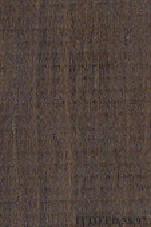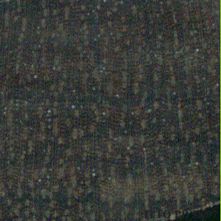
EBONY (Diospyros mespiliformis)
Trade Name
Ebony
Scientific Name
Diospyros mespiliformis Hochst.
Family
EBENACEAE
Common Names
Sanzamulike; Sanzamouki; Liberia ebony; Kusibiri (Ghana); Flintbark; Esunseka; Esonoakyi; Esono-akyenie; Esono-afe; Enkyinwine; Dubima; Ankyeyi; Nyareti (Nigeria); Kanran (Nigeria); Abokpo (Nigeria); Ebene (Benin); Ebène (France); African ebony (United Kingdom); Afrikanisches ebenholz (Germany); Ebène (Belgium); Evila (Gabon); Ebano (Equatorial Guinea); Ngoubou (Central African Republic); bingo (Central African Republic); Mevini (Cameroon); Yeti; White ebony; West African ebony; Swamp ebony; Sunsun; Sunsu; Onye-koji; Okusibiri; Obiudu; Nangalo; Monkey guava; Legabol; Kukuo; Keyi keyi; Keke; Karan; Kanya; Kaiwa; Jukhan; Jeti; Igi dudu; Gughan; Ginga; Gawelle; Ga; Ferdamu; Doue; Donko; Dabakala sunsu; Burgum; Bugao; Bergem; Alom; Ebène
Scientific Name Synonyms
Diospyros senegalensis Perr. ex A.DC.
Description Of The Tree
Botanical Description
The unbuttressed, slender bole may reach a height of 16 to 20 m. It is cylindrical and straight or slightly crooked, without swollen base. The trunk diameter attains 70 to 100 cm.
Natural Habitat
Diospyros mespiliformis forms almost pure groups near riverbanks.
Natural Distribution
Commercial supplies are mostly from Equatorial West Africa.
Wood Identification
Anatomic Description Of Wood
Wood diffuse porous. Occasionally vessels exclusively solitary (over 90%). Tangential diameter of vessel lumina 100 to 150 micras (small). Non-vestured pits. Vessels per mm2 6 to 10 (medium). Simple perforation plates. Vessel-ray pits similar to intervessel pit Apotracheal axial parenchyma diffuse and/or diffuse in aggregates. Occasionally axial parenchyma in discontinuous tangential lines. 3 to 4 cells per parenchyma strand. Rays more than 10 per mm (abundant). Rays non-storied. Rays exclusively uniseriate. Prismatic crystals in the ray cells. Heterogeneous rays and/or multiseriate heterogeneous rays. Non-septate fibers. Fibers with simple to minutely bordered pits.
-
 Wood Macro Photo Tangential Plane
Wood Macro Photo Tangential Plane
-
 Wood Micro Photo Of Transversal Section
Wood Micro Photo Of Transversal Section
Availability
Cites Status
CITES III
General Wood Description
Color
The sapwood is white, pink or grey darkening to dark brown but never black. The heartwood is the heartwood core attains 15 to 22.5 cm, it is clearly demarcated.
COLOR INDEX (1=Black, 7=Light yellow,white)
1
Grain
Straight; grain has no particular influence on drying, machining and finishing qualities.
Texture
This wood has a somewhat fine texture.
Natural Durability
Very durable to decay; without preservative treatment. This species is especially suited for all the uses with risks of permanent or long-lasting humidification. Resistant to termites attack. Heartwood is resistant to Lyctus attacks.
Natural durability index (1= Very high durability, 7=Vey low durability)
1
Internal Growth Stresses
For this species no growth stresses are reported.
Resistance To Impregnation
Nearly impossible to treat with a too much low penetration of the preservative substances.
Wood Physical Properties
Basic Density or Specific Gravity (O.D. weight/vol. green) (g/cm³)
0.74
Air-dry Density (Weight and volume at 12%MC) (g/cm³)
0.84
Total shrinkage Tangential (Saturated to 0%MC) (%)
10.7
Total shrinkage Radial (Saturated to 0%MC) (%)
5.7
Drying Defects
Ease of Drying: Drying is rather slow and sometimes difficult to perform. Drying Defects: Risks of casehardening and checks Kiln Schedules: The kiln schedule has been tested.
Recommended Dry Kiln Schedule
FR-13
Dimensional stability ratio (Total Tangential Shrinkage %/Total Radial Shrinkage %)
1.9
Wood Chemical Properties
Wood Mechanical Properties
Bending Strength (MOR),12%MC (kgf/cm²)
1139
Stiffness (MOE) 12%MC (kgf/cm²)
157732
Compression parallel to fiber 12%MC (kgf/cm²)
595
Compression perpendicular to fiber 12%MC (kgf/cm²)
78
Shear strength radial 12%MC (kgf/cm²)
117
Janka hardness (side) 12%MC (kgf)
887
Janka hardness (end grain) 12%MC (kgf)
951
Workability
Sawing
Sawing of this species requires powerful equipment.
Rotary Veneer Cutting
Suitable for slicing.
Sliced Veneer
Suitable for slicing.
Blunting Effect
Moderate blunting effect; stellited blades for sawing and carbide tools for machining are advised.
Machining
It needs powerful tools for processing. Possible difficulties caused by interlocked grain are reported.
Planing
Rather difficult; special tools are needed.
Moulding
Easy; no particular problems.
Turning
30
Boring
Easy; no particular problems.
Mortising
Easy; no particular problems.
Nailing
Pre-boring is necessary.
Gluing
Difficult to glue because of high density.
Sanding
Easy to perform; it gives good results.
Polishing
Can be polished without surface preparation.
Steam Bending
Steam bending is difficult.
Response To Hand Tools
Working with hand tools is difficult.
REFERENCED USES
End Uses Summary
HOUSING GENERAL, fittings, FURNITURE AND CABINETS, luxury furniture, cabinets, PLYWOOD AND VENEER, Decorative veneer, TURNING, ornaments, turned furniture, cutlery, lasts, OTHER AND MUSICAL INSTRUMENTS, handicrafts
General Housing
- 10 - Silica in Timbers
Fittings
- 19 - Silica in Timbers
Furniture Cabinets
- 21 - Tropical timbers of the world. Part III-Southeast Asian and Oceanian Species.
Furniture, Luxury
- 22 - Dry kiln schedules for commercial woods. Temperate and tropical. Section IV-Asian and Oceanian Woods
Cabinet
- 24 - Empire Timbers
Panels, Veneers
- 25 - Directory of Timber Trade Malaysia
Decorative veneer
- 28 - Ministry of Agriculture, Fisheries & Forest of Fiji
Turning
- 30 - Embassy of Honduras in Japan
Ornaments
- 31 - Embassy of Colombia in Japan
Turned Articles
- 32 - Embassy of Cote d`Ivoire in Japan
Knife Handles
- 33 - Embassy of Gabon in Japan
Lasts
- 34 - Embassy of Indonesia in Japan
Other & Musical Instruments
- 63 - Madeiras do Brazil II
Handcraft
- 66 - Maderas latinoamericanas. VII. Caracteristicas anatomicas. propiedades fisicomecanicas, de secado, y tratabilidad de la madera juvenil de Cordia alliodora (Ruiz & Pav. Oken.)
Please Provide Information To View Producer Information